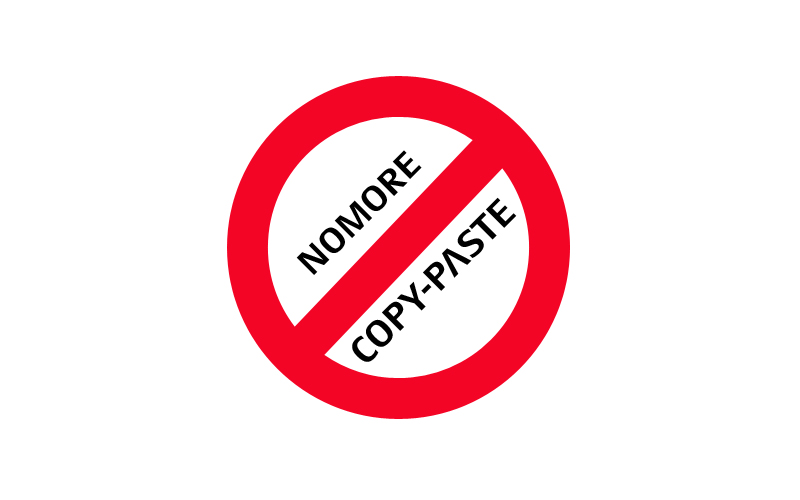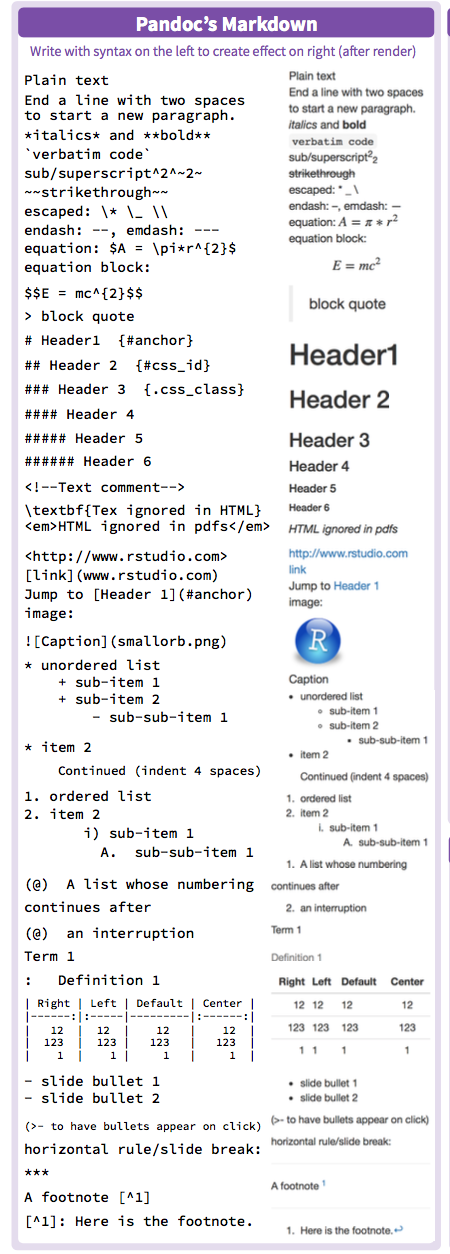1 R markdown
Markdown is a simple yet but powerful language to create publications. Easy syntax that allows formatting and inclusion of links, images, references inline in the text.
1.1 Examples:
1.1.1 First example
An equation: $A = \sin(x)^2*log(a)+25^{2}$ If you type tthis this is code
\(A = \sin(x)^2*log(a)+25^{2}\)
1.1.2 Second example
An image: !(copypaste.jpg)
No more copy - paste! 
1.1.3 Third example:
A hyperlink: [GBIF](http://www.gbif.org/)
The following link takes you the GBIF webpage.
1.2 General Markdown Syntax
Figure 1.1 shows the portion of the RMarkdown cheatsheet 2.0 related with Pandoc’s Markdown syntax.

Figure 1.1: Pandoc’s Markdown syntax summary. Obtained from RMarkdown cheatsheet
1.3 Why use Rmarkdown?
RMarkdown allows you to integrate your code for analysis pipelines and frameworks with text written in Markdown syntax. This ensure that your analysis are reproductible, interactive, shareable and eye-pleasant to report. At the same time reduces the time spent in writing and formatting reports. Manual tasks like ennumerating figures and bibliography are automatized. You start writing the report along with the analyses. In addition Rmarkdown support code not just from R, but also with other programming languages.
With Python:
print 'Hello, world. This is Python:'
import sys
print(sys.version) # Python version## Hello, world. This is Python:
## 2.7.10 (default, Jul 30 2016, 19:40:32)
## [GCC 4.2.1 Compatible Apple LLVM 8.0.0 (clang-800.0.34)]With R
print("Hello, world. This is R")## [1] "Hello, world. This is R"version## _
## platform x86_64-apple-darwin13.4.0
## arch x86_64
## os darwin13.4.0
## system x86_64, darwin13.4.0
## status
## major 3
## minor 3.2
## year 2016
## month 10
## day 31
## svn rev 71607
## language R
## version.string R version 3.3.2 (2016-10-31)
## nickname Sincere Pumpkin PatchIn summary:
\[ Markdown + R + Bookdown = Reports (Dynamic + Reliable ) \]2
R can actually be other programming lenguage, Reliable in the sense the code is properly written.↩